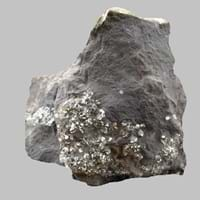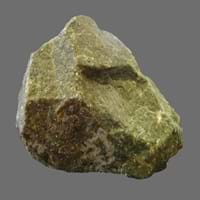Definition
Argillites are highly compact sedimentary or slightly metamorphosed rocks that consist largely or wholly of particles of clay or silt but lack the fissility of shale or the cleavage characteristic of slate
Dunite is a green to brownish coarse-grained igneous rock mainly consisting of olivine
Origin
Unknown
New Zealand
Discoverer
Unknown
Ferdinand von Hochstetter
Etymology
From Latin Argilla (clay) and -ite in English which became agrilla+ -ite = Argillite
From the name of Dun Mountain, New Zealand, + -ite1
Class
Sedimentary Rocks
Igneous Rocks
Sub-Class
Durable Rock, Soft Rock
Durable Rock, Medium Hardness Rock
Group
Not Applicable
Plutonic
Other Categories
Fine Grained Rock, Opaque Rock
Coarse Grained Rock, Opaque Rock
Texture
Clastic, Polished
Phaneritic
Color
Dark Grey to Black, Pink, Red, White
Dark Greenish - Grey
Durability
Durable
Durable
Scratch Resistant
Yes
Yes
Appearance
Rough and Dull
Rough and Shiny
Interior Uses
Decorative Aggregates, Homes, Interior Decoration
Decorative Aggregates, Interior Decoration
Exterior Uses
As Building Stone, Garden Decoration, Office Buildings
As Building Stone, As Facing Stone, Garden Decoration, Paving Stone
Other Architectural Uses
Curbing, Whetstones
Curbing
Construction Industry
Used for flooring, stair treads, borders and window sills.
As Dimension Stone, Cement Manufacture, Construction Aggregate, for Road Aggregate, Making natural cement, Raw material for the manufacture of mortar
Medical Industry
Not Yet Used
Not Yet Used
Antiquity Uses
Artifacts, Monuments, Sculpture
Artifacts, Monuments, Sculpture, Small Figurines
Commercial Uses
Fire resistant, Used to manufracture paperweights and bookends
Creating Artwork, Gemstone, Jewelry, Source of Chromite, Platinum, Nickel and Garnet, Source of Diamonds
Types
Not Available
Not Available
Features
Is one of the oldest rock
Constitutes upper part of the Earth's mantle, Generally rough to touch, Host rock for Diamond, Is one of the oldest rock
Archaeological Significance
Famous Monuments
Data Not Available
Data Not Available
Famous Sculptures
Data Not Available
Data Not Available
Formation
An argillite is a fine-grained sedimentary rock mainly composed of clay particles which forms from lithified muds which contain variable amounts of silt-sized particles.
Dunite is a plutonic ultramafic igneous rock consisting almost m olivine. It can be formed in two ways.
Mineral Content
Biotite, Chlorite, Feldspar, Micas, Muscovite or Illite, Plagioclase, Pyrite, Quartz
Amphibole, Chromite, Garnet, Magnesium, Olivine, Phlogopite, Plagioclase, Pyroxene
Compound Content
Iron(III) Oxide, Potassium Oxide, MgO, Silicon Dioxide
Ca, CaO, Fe, Potassium, Silicon Dioxide, Sodium, Titanium Dioxide
Types of Metamorphism
Not Applicable
Burial Metamorphism, Cataclastic Metamorphism, Contact Metamorphism
Types of Weathering
Biological Weathering
Biological Weathering, Chemical Weathering, Mechanical Weathering
Types of Erosion
Chemical Erosion
Coastal Erosion, Glacier Erosion, Water Erosion
Grain Size
Fine Grained
Coarse Grained
Fracture
Conchoidal to Uneven
Irregular
Streak
White to Grey
White
Porosity
Highly Porous
Less Porous
Luster
Waxy and Dull
Shiny
Compressive Strength
Not Available
Specific Gravity
2.56-2.68
3-3.01
Transparency
Opaque
Translucent to Opaque
Density
2.54-2.66 g/cm3
2.84-2.85 g/cm3
Resistance
Heat Resistant, Impact Resistant
Heat Resistant, Pressure Resistant, Wear Resistant
Deposits in Eastern Continents
Asia
Bangladesh, China, India, Russia
China, India, Indonesia, Kazakhstan, Russia, South Korea, Thailand, Turkey
Africa
Ethiopia, Kenya, Morocco, South Africa, Tanzania
Morocco, South Africa
Europe
Austria, France, Germany, Greece, Italy, Romania, Scotland, Spain, Switzerland
Finland, France, Georgia, Germany, Great Britain, Italy, Kazakhstan, Netherlands, Norway, Spain, Switzerland, Venezuela
Others
Not Yet Found
Not Yet Found
Deposits in Western Continents
North America
USA
Canada, USA
South America
Bolivia, Chile, Colombia, Ecuador, Peru, Venezuela
Argentina, Brazil, Colombia, Ecuador, Venezuela
Deposits in Oceania Continent
Australia
New South Wales, New Zealand, Queensland, Victoria, Western Australia
New Zealand, Western Australia
Argillite vs Dunite Characteristics
Though some rocks look identical, they have certain characteristics which distinguish them from others. Characteristics of rocks include texture, appearance, color, fracture, streak, hardness etc. Argillite vs Dunite characteristics assist us to distinguish and recognize rocks. Also you can check about Properties of Argillite and Properties of Dunite. Learn more about Argillite vs Dunite in the next section. The interior uses of Argillite include Decorative aggregates, Homes and Interior decoration whereas the interior uses of Dunite include Decorative aggregates and Interior decoration. Due to some exceptional properties of Argillite and Dunite, they have various applications in construction industry. The uses of Argillite in construction industry include Used for flooring, stair treads, borders and window sills. and that of Dunite include As dimension stone, Cement manufacture, Construction aggregate, For road aggregate, Making natural cement, Raw material for the manufacture of mortar.
More about Argillite and Dunite
Here you can know more about Argillite and Dunite. The life cycle of a rock consists of formation of rock, composition of rock and transformation of rock. The composition of Argillite and Dunite consists of mineral content and compound content. The mineral content of Argillite includes Biotite, Chlorite, Feldspar, Micas, Muscovite or Illite, Plagioclase, Pyrite, Quartz and mineral content of Dunite includes Amphibole, Chromite, Garnet, Magnesium, Olivine, Phlogopite, Plagioclase, Pyroxene. You can also check out the list of all Sedimentary Rocks. When we have to compare Argillite vs Dunite, the texture, color and appearance plays an important role in determining the type of rock. Argillite is available in dark grey to black, pink, red, white colors whereas, Dunite is available in dark greenish - grey colors. Appearance of Argillite is Rough and Dull and that of Dunite is Rough and Shiny. Properties of rock is another aspect for Argillite vs Dunite. The hardness of Argillite is 2-3 and that of Dunite is 3.5-4. The types of Argillite are Not Available whereas types of Dunite are Not Available. Streak of rock is the color of powder produced when it is dragged across an unweathered surface. The streak of Argillite is white to grey while that of Dunite is white. The specific heat capacity of Argillite is 0.87 kJ/Kg K and that of Dunite is 1.25 kJ/Kg K. Depending on the properties like hardness, toughness, specific heat capacity, porosity etc., rocks are resistant to heat, wear, impact, etc.Argillite is heat resistant, impact resistant whereas Dunite is heat resistant, pressure resistant, wear resistant.





